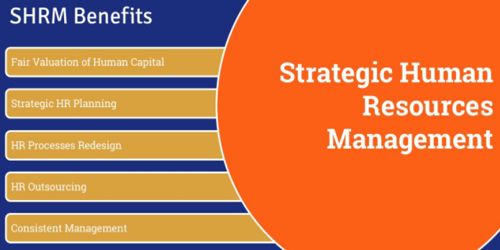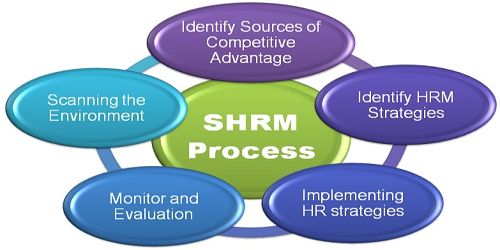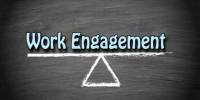Strategic human resource management (SHRM) involves a future-oriented process of developing and implementing HR programs that address and solve business problems and directly contribute to major long-term business objectives.
SHRM is a complex process which is constantly evolving and being studied and discussed by academics and commentators. Its definition and relationships with other aspects of business planning and strategy is not absolute and opinion varies between writers. Strategic human resource management includes typical human resource components such as hiring, discipline, and payroll, and also involves working with employees in a collaborative manner to boost retention, improve the quality of the work experience, and maximize the mutual benefit of employment for both the employee and the employer.
Strategic HRM can be regarded as a general approach to the strategic management of human resources in accordance with the intentions of the organisation on the future direction it wants to take. It is concerned with longer-term people issues and macro-concerns about structure, quality, culture, values, commitment and matching resources to future need. It has been defined as:
- All those activities affecting the behaviour of individuals in their efforts to formulate and implement the strategic needs of business.
- The pattern of planned human resource deployments and activities intended to enable the forms to achieve its goals.

Strategic HRM can encompass a number of HR strategies. There may be strategies to deliver fair and equitable reward, to improve performance or to streamline structure. However, in themselves these strategies are not strategic HRM. Strategic HRM is the overall framework which determines the shape and delivery of the individual strategies.
Boxall and Purcell argue that strategic HRM is concerned with explaining how HRM influences organisational performance. They also point out that strategy is not the same as strategic plans. Strategic planning is the formal process that takes place, usually in larger organisations, defining how things will be done. However strategy exists in all organisations even though it may not be written down and articulated. It defines the organisation’s behaviour and how it tries to cope with its environment.
Strategic HRM is based on HRM principles incorporating the concept of strategy. So if HRM is a coherent approach to the management of people, strategic HRM now implies that that is done on a planned way that integrates organisational goals with policies and action sequences.
Description
It is the practice of attracting, developing, rewarding, and retaining employees for the benefit of both the employees as individuals and the organization as a whole. HR departments that practice strategic human resource management do not work independently within a silo; they interact with other departments within an organization in order to understand their goals and then create strategies that align with those objectives, as well as those of the organization. As a result, the goals of a human resource department reflect and support the goals of the rest of the organization. Strategic HRM is seen as a partner in organizational success, as opposed to a necessity for legal compliance or compensation. Strategic HRM utilizes the talent and opportunity within the human resources department to make other departments stronger and more effective.
Recruitment & selection function of SHRM
Recruitment is the primary and very imporatnt function of SHRM
The main sources of recruitment are:
- Internal promotion and internal introductions (at times desirable for morale purposes)
- Careers officers (and careers masters at schools)
- University appointment boards
- Agencies for the unemployed
- Advertising (often via agents for specialist posts) or the use of other local media (e.g. commercial radio).
Where the organization does its own printed advertising it is useful if it has some identifying logo as its trade mark for rapid attraction and it must take care not to offend the sex, race, etc. antidiscrimination legislation either directly or indirectly. The form on which the applicant is to apply (personal appearance, letter of application, completion of a form) will vary according to the posts vacant and numbers to be recruited.
Before letters of appointment are sent any doubts about medical fitness or capacity (in employments where hygiene considerations are dominant) should be resolved by requiring applicants to attend a medical examination. This is especially so where, as for example in the case of apprentices, the recruitment is for a contractual period or involves the firm in training costs.
Interviewing can be carried out by individuals (e.g. supervisor or departmental manager), by panels of interviewers or in the form of sequential interviews by different experts and can vary from a five minute ‘chat’ to a process of several days. Ultimately personal skills in judgment are probably the most important, but techniques to aid judgment include selection testing for:
- Aptitudes (particularly useful for school leavers)
- Attainments
- General intelligence
In more senior posts other techniques are:
- Leaderless groups
- Command exercises
- Group problem solving
Importance:
Strategic planning presents great challenges and opportunities for HR professionals. Nearly all HR leaders in the largest global companies are involved in strategic decision-making and participate on the organization’s strategy team, and a majority of HR professionals report that strategic planning is part of their function. In contrast, HR professionals in many medium and small organizations are not often involved in organizational or functional strategic planning. Consequently, to achieve long-term strategic HR objectives and to be a key player in the organization’s strategic planning process, some HR departments may need to overcome stereotypical negative views of the HR function.
Information Source:
















